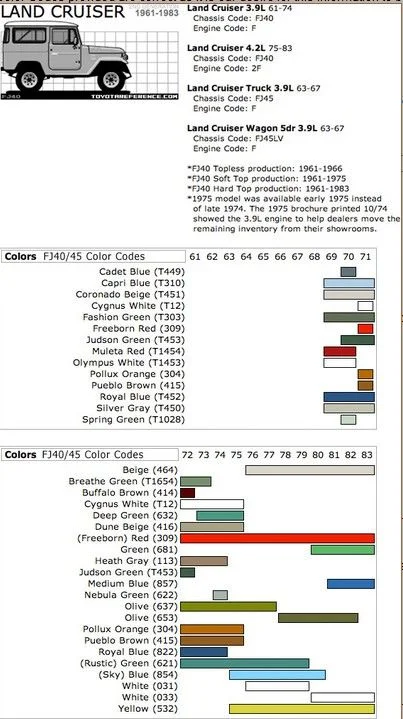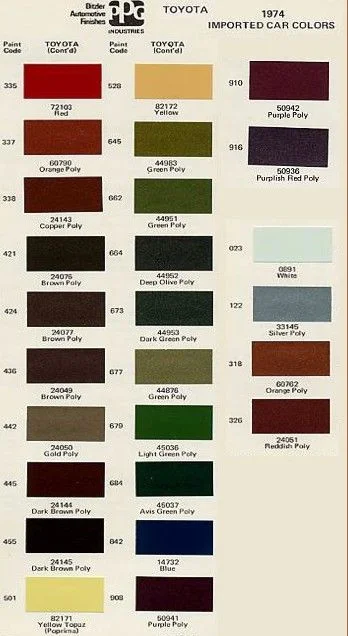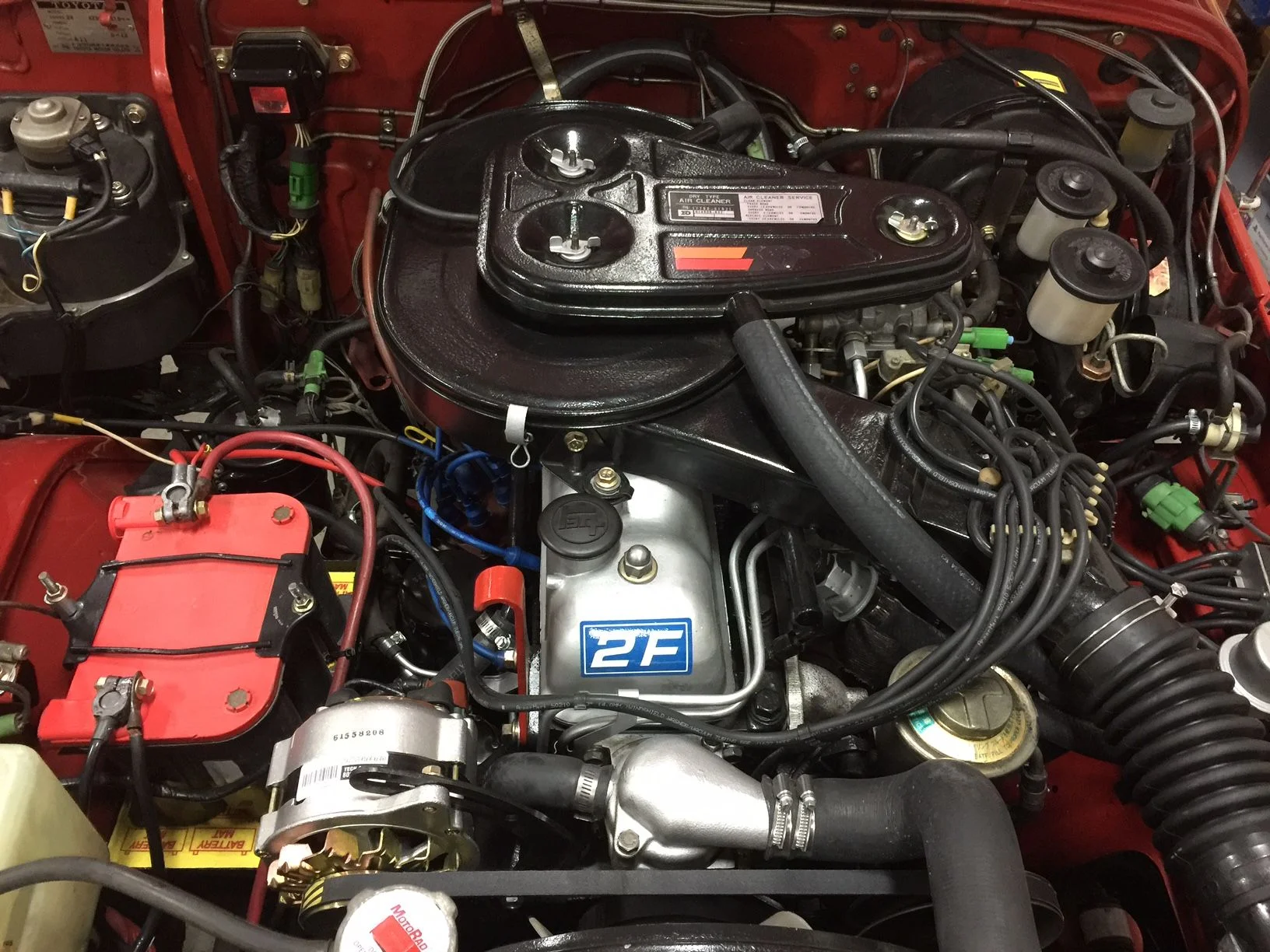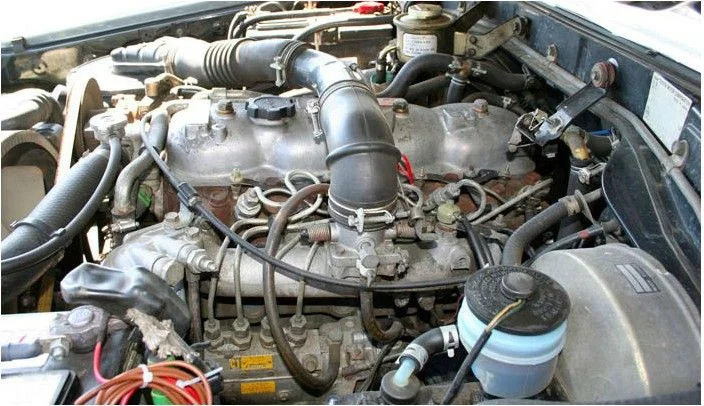Toyota Land Cruiser Model BJ Series (1951-1955)
Toyota Land Cruiser Model BJ Series (1951-1955)
The Land Cruiser currently has the longest running history in the Toyota lineup. With origins from the Toyota Jeep BJ which was created in 1951, the name "Land Cruiser" has since been used from the release of the 20-series in 1955. (See pic above)
The automobile industry was in a fateful crisis from Japan's defeat in war and the chaos that followed it. However, military procurement enabled a recovery and the combination of the accumulation of technology from before the war and present material resulted in the development of an automobile above expectations.
The chassis of the Toyota Jeep BJ was based on the SB-type 1-ton truck (with an S-type 995cc engine) that was originally released in 1947. For that reason, at 2,400mm the wheelbase about 200mm longer than that of the Jeep, and the body was also a size larger. The SB-type compact truck was commonly known as the Pony Toyota (and later the Toyopet Truck), and because it was designed as a small transport vehicle that could also double as a passenger car, its suspension settings were likewise soft. These characteristics were carried over into the Toyota BJ-type, so it gave a surprisingly comfortable ride.
The engine was a 3,386cc water-cooled in-line 6-cylinder B-type gasoline engine. Jeeps being built at that time had a side valve construction, but the B-type engine was an OHV (Over Head Valve) type. The engine was originally designed in 1937, with the first prototype completed the next year in 1938, after which it was installed in the GB-type truck, the KB-type truck, and the BM-type truck, being primarily an engine for 4-ton class trucks.
The capacity of the B-type engine when it was first developed was a maximum output of 75HP/3,200rpm, and a maximum torque of 21kgm/1,600rpm. Later these specs were improved by boosting the compression ratio and through other refinements, so that whereas the first model Toyota Jeep BJ model had a maximum output of 82HP/3,000rpm and a maximum torque of 21.6kgm/1,600rpm, by the late model version the power had been boosted to a maximum output of 85HP/3,200rpm and maximum torque of 22kgm/1,600rpm. This meant reserve power for the size of the body it was mounted in, so the Toyota Jeep BJ came without a LO range subgear.
The Toyota Jeep BJ was completed in 1951, and first unveiled that same year at a public showing of Toyota vehicles. There were 26 Toyota vehicles displayed at this event, and during the 3-day period the attendance amounted to some 200,000 people. Moreover, the design of the Crown was begun in 1952, with the first Crown model built in 1955.
At the time it was considered unusual to say the least to match a 4-ton truck engine with a compact truck chassis, but in reality these were the only materials that Toyota had to work with. It turned out to be a successful combination. An ample sized body useful for transporting materials driven by an engine with power to spare, this model met multiple needs in the market for a compact 4x4 vehicle at a high level. Moreover, the fact that it was not adopted for use by the Police Defense Forces actually turned out to be a major stimulus for the development of an export strategy, with considerably more freedom in design and development, and became a key factor in Toyota's successful overseas launch.
However, in 1953 Toyota did receive a procurement order from the National Police Agency, and the plant in charge of production was the Arakawa Bankin Kogyo KK (now called ARACO Corporation). With regular orders for large-scale production, the factory literally worked around the clock to meet demand. The process worked like this: first the parts for the chassis would be shipped from Toyota Motor Corporation for assembly at the Toyoda Automatic Loom Works, Ltd., then transported to the Arakawa Bankin Kogyo KK, where the body was painted. The completed vehicles would then be shipped overland back to the Toyoda Automatic Loom Works, Ltd., where they would be inspected by officials from the National Police Agency, whose demands could be met by a team of about 20 people who could do finishing work and make adjustments.
The Toyota BJ-type was a multi-purpose compact truck based SB-type truck, and went through a series of body shape design changes over time. The original short body hooded cargo and passenger carrier type was converted to a metal top type, and a closed type passenger model was also released. For the cargo carrying version the rear was extended by 500mm and converted to a pickup truck, and there was also a truck with a separate unit cabin and truck bed. There were many variations according to where the spare tire was located, not only on the rear gate, but even on the front fender or below the truck bed.
Because the body has a rather squeezed nose design, the diameter of the steering wheel covers about half of the instrument panel. For that reason the driver's seat feels rather cramped, and when you carry a passenger it makes it a bit difficult to steer. In the later 20-series models the steering wheel was moved further to the outside.
The Toyota BJ is essentially an SB-type chassis mounted with an engine built for a 4-ton truck. It was originally developed in response for a bid from the National Police Reserve Forces, like the Willys Jeep, but there were several significant differences between the two models. One difference was the engine. The Willys Jeep had a 2.2-liter compact in-line 4-cylinder engine mounted in a compact body. By contrast, the Toyota BJ-type vehicle had a 3.4-liter large-sized in-line 6-cylinder engine.
The so-called B-type engine not only had a larger piston displacement, but also structural differences. Build for effectiveness on the battlefield, the Willys Jeep had pursued a low hood profile, and consequently was built with side-valve type cylinder heads. The Toyota BJ-type on the other hand, with its larger piston displacement and cylinder head structure, was better suited to the dawning new age of the 4x4.
There were also differences in the power train. From the BJ-type to the subsequent Land Cruiser 20-series there was no LO gear in the transfer. As a part-time 4x4, the transfer lever extending from the floor only triggered a switch from 2WD to 4WD mode. The 3.4-liter engine had strong torque from the start, so there was no particular need to secure extra torque by means of a complicated subgear in the power train. However, the 4-speed transmission also came with a low gear, the 1st gear having a low gear ratio of 5.53 in the 1st gear compared to the final gear ratio of 4.11, a result of its being based essentially on truck specifications. The low gear ratio in the transmission also limits the maximum speed you can get out of the vehicle, but at the time there were few paved roads, and for a car designed from the start for limited applications this was not a problem.
The National Police Reserve Forces elected to go with the Willys Jeep for their procurement program, but in many respects the Toyota BJ was a superior vehicle. It had a larger piston displacement, a longer wheelbase, and a larger body. Moreover, its softer suspension settings reduced fatigue on the driver, all of which contributed greatly to Toyota's later success in penetrating overseas markets. By the time large-scale production began in 1953, the Toyota BJ had already paved the path to overseas markets.


- The leaf springs were supported by a full-floating front axle, 9 plates each with a 1,000mm span, a 45mm width, and 6mm thickness. The spring brackets were fixed by rivets.
- The leaf springs were supported by a semi-floating rear axle, 10 plates each with a 1,150mm span, a 45mm width, and a 6mm thickness. There was lots of friction between the leaf springs while driving, which effectively reduce vibration to the body.
- The ladder type frame on the Toyota BJ was built so that the distance between the side frames grew narrower as you approached the front. The front was narrower at the front in order to support the heavy front-mounted engine, while the rear was wider to provide stability for the wheels. There were 3 cross-members, with the side frame between the first and second cross-member being made of a high-strength box-enclosed type structure.
Birth of The Toyota Jeep BJ
The history of the Land Cruiser began just after World War II in 1950. The drastic rise in inflation in Japan after World War II resulted in enormous living difficulty for citizens and thus resulted in the implementation of the "Dodge line" economic stabilization policy in Japan by the U.S.A. in 1949. The extremely strict austerity measures of this financial and monetary contraction policy at last brought inflation under control. However, the drastic change in policies had a dampening effect on industrial production activities, and Japanese industries faced an even more serious period of difficult times.
The resulting recession had a direct impact on the automotive industry, making it difficult to obtain funds and requiring companies to revise production plans and cut back staff. This resulted in regular conflicts with labor unions, and in April of 1950 Toyota suffered a large-scale strike. The dispute was eventually resolved in June, after a major management shuffle. However, production levels dropped during the strike, and the monthly production during that time was only a few hundred units per month. This period was truly one of the most difficult periods for Toyota as a company. On June 25 of 1950 the North Korean (Democratic People's Republic of Korea) suddenly invaded the South Korean (Republic of Korea), and the Korean War had begun.
At that time Japan was still under the influence of America, centering on the occupation forces of the United States military, for which Japan played a role as a supply base, and with the Korean War all military production went into full time operation. Orders were issued by the headquarters of the occupying forces for large numbers of military trucks. This was a special demand tied directly to the Korean War.
When the National Police Reserve Forces (now called the Japan Self-Defense Forces) was first established it depended entirely on the U.S. Military for all of its equipment, however very quickly it was urged that domestic sources of supply be developed. Part of the motivation was to create a base in Japan through which the U.S. Military could procure military vehicles for use throughout the Asia region, but Japanese automakers were asked to produce prototypes for compact 4x4 trucks and other vehicles.
In response Toyota began designing such vehicles in August of the same year, and by January of 1951 had produced a prototype. The prototype was a truck with a B-type gasoline powered water-cooled in-line 6-cylinder 3,386cc engine, installed on a SB-type 1-ton truck chassis.
At the time there were many Jeeps being driven in Japan, which had been brought in by the occupying forces, and the Jeep came to be the symbol of the 4x4. For this reason Toyota called its prototype the Toyota Jeep, and by combining a B-type engine with a Jeep model it was known as the BJ.
However, the vehicle which was ultimately selected for procurement by the National Police Reserve Forces was the Willys Jeep. The Toyota Jeep BJ had been rejected on this project, but in July of the same year test driver Ichiro Taira did a test run under the supervision of officials from the National Police Agency, and performed brilliantly, climbing by car all the way up to the No. 6 checkpoint on Mt. Fuji. The test run was viewed favorably, and in August this model was officially adopted as the patrol car for the National Police Agency.
However, large-scale production of the Toyota Jeep did not begin until August of 1953. It took 2 years from the decision to adopt the prototype to get ready for full-scale production, most of the time being required for detailed decisions on the specs and on price negotiations. But orders were placed in blocks covering the fiscal year, as one would expect from a government agency. In the first year 298 Toyota Jeep BJs rolled off the production line. Later, in addition to the patrol car for the National Police Agency, Toyota also received orders from the Forestry and Agricultural Agency and from Electric Power companies.
The next year in June of 1954, responding to claims of trademark violation by the Willys Company that produced the original Jeep, then Director of Technology Hanji Umehara renamed this 4-wheeled vehicle as the Land Cruiser. The rest as they say is history, as the Land Cruiser demonstrated global competitiveness with its rival models, and its success proved it to be truly worthy of its name.
Sakichi Toyoda founded the Toyoda Automatic Loom Works, Ltd., to which he dedicated his entire career. Successor to the intelligence and active spirit of his father, Kiichiro Toyoda established the company in the automotive industry. His dream was to produce an automobile that could gain acceptance throughout the world, and certainly Toyota has taken that major step.
Model AK10, Specification
Overall, Length...................3,390mm
Overall, Width.....................1,570mm
Overall, Height....................1,800 (1,370)mm
Wheel Base........................2,300mm
Tread, Front/Rear................1,300mm/1,300mm
Minimum Turning Radius........6.0m
Vehicle Weight....................1,100kg
Payload.............................500kg
Seating Capacity.................2 Passengers
Gross Vehicle Weight............1,800kg
Engine Type.......................Gasoline engine, 4-cycle, OHV
Number of Cylinders..............4
Bore and Stroke...................84.14mm x 101.6mm
Displacement......................2,258cc
Compression Ratio................6.0
Maximum B.H.P....................43HP at 2,800 rpm
Maximum Torque..................17.0kg-m at 1,400 rpm
Maximum Speed...................80km/h
Gasoline Tank Capacity.........50L







































